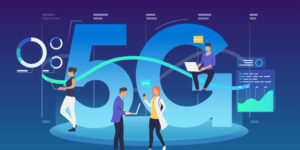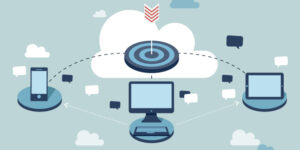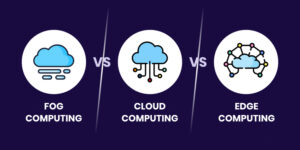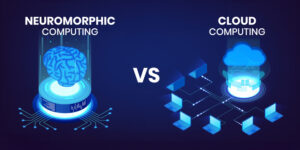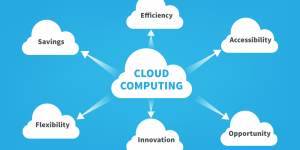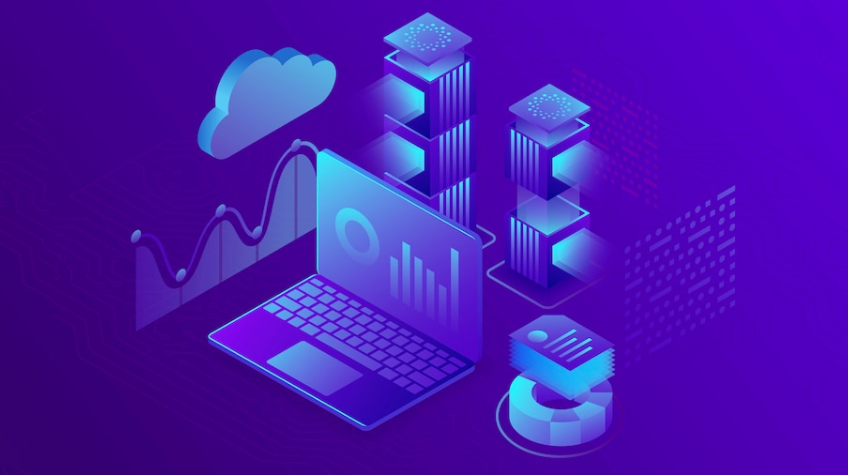
In the digital age, where data is the lifeblood of innovation, the rise of edge computing has been nothing short of revolutionary. Edge computing technology represents a transformative shift in processing and utilizing data, offering unparalleled speed, security, and scalability. It brings the power of computation closer to where data is generated, reducing latency to a minimum and opening the door to real-time, data-driven applications that were once considered out of reach.
In this blog, we embark on an exciting journey to explore the top 10 edge computing examples that showcase its profound impact across various industries. From smart cities to autonomous vehicles, the potential of edge computing is boundless, and we’re about to witness its true potential.
What is Edge Computing?
Edge computing is a paradigm-shifting technology that redefines how data is processed and managed in the digital era. Unlike traditional cloud computing, edge computing brings computation and data hold closer to the source of data generation, such as IoT devices, sensors, or endpoints. This decentralization reduces data transfer latency, enabling real-time processing for critical applications.
devices, sensors, or endpoints. This decentralization reduces data transfer latency, enabling real-time processing for critical applications.
Edge computing enhances data privacy, security, and reliability while offering scalability to meet the demands of modern industries. It empowers innovations in smart cities, healthcare, manufacturing, and beyond, making it a pivotal element in the era of rapid technological advancement.
Importance of Edge Computing Technology
- Reduced Latency and Improved Real-time Processing: Edge computing significantly minimizes data transfer delays by processing information locally. Applications that require split-second decisions, such as autonomous vehicles, where every millisecond counts, require this.
- Enhanced Data Privacy and Security: Edge computing reduces exposure to potential security breaches during long-distance data transfers because sensitive data remains closer to its origin.
- Scalability and Cost-efficiency: Edge computing offers flexible scalability, as you can distribute processing power and storage across a network of edge devices as needed. This approach eliminates the need for massive centralized data centers, reducing operational costs while optimally allocating resources.
- Reliability and Availability: By distributing computing resources across multiple edge devices, edge computing enhances system reliability and availability. Even if one device fails, the network can continue functioning, making it ideal for mission-critical applications like industrial automation and emergency response systems.
Top 10 Edge Computing Examples
1. Smart Cities
In smart cities, edge computing examples shine brightly as they transform urban landscapes. Intelligent traffic management systems utilize edge computing to process real-time data from cameras, sensors, and connected vehicles. This enables swift traffic analysis, congestion reduction, and adaptive traffic signal control, enhancing urban mobility.
Simultaneously, environmental monitoring and control systems leverage edge computing to collect and process data on air quality, noise levels, and weather conditions, contributing to a cleaner and safer urban environment. These edge computing applications empower cities to make data-driven decisions swiftly, ensuring efficiency, sustainability, and the well-being of their residents.
2. Healthcare
In this region, edge computing examples are revolutionizing patient care. In addition to collecting personal health data from patients’ wearable devices, edge computing also allows healthcare providers to provide timely interventions and treatment plans based on the data collected. These devices, from smartwatches to continuous glucose monitors, send critical health information to the edge, where it’s processed and analyzed locally.
This approach not only enhances patient outcomes by detecting anomalies and trends promptly but also preserves data privacy and security. Edge computing is at the forefront of transforming healthcare into a proactive, patient-centric ecosystem, where wearable health devices are integral tools for monitoring and improving well-being.
3. Industrial IoT
Industrial IoT (IIoT) exemplifies the transformative power of edge computing in the manufacturing sector. This data includes variables like temperature, vibration, and wear-and-tear, allowing machines to predict when they require maintenance. This proactive approach minimizes downtime and lowers maintenance costs.

Similarly, in quality control, edge computing instantly processes data from sensors and cameras on the production line. It identifies defects or inconsistencies in products, guaranteeing a high-quality standard. These edge-computing applications streamline manufacturing processes, enhance productivity, and ensure the delivery of top-notch products.
4. Retail
In the dynamic world of retail, edge computing is reshaping the shopping experience and revolutionizing supply chain operations. Personalized shopping experiences are elevated with the power of edge computing, as it allows retailers to process and analyze customer data in real time. This enables the delivery of tailored recommendations and promotions while the customer is in the store, enhancing engagement and satisfaction.
Simultaneously, edge computing plays a pivotal role in inventory management and supply chain optimization by providing instant insights into stock levels, demand patterns, and logistics data. By minimizing stockouts and overstock situations, edge computing keeps the retail ecosystem agile, responsive, and efficient, benefiting retailers and consumers.
5. Autonomous Vehicles
In autonomous vehicles, the integration of edge computing exemplifies its transformative potential. Edge-based AI for self-driving cars harnesses the processing power of onboard computers to make split-second decisions based on real-time data from sensors and cameras. This approach ensures that self-driving vehicles can navigate complex environments safely and efficiently without relying on distant cloud servers, reducing latency and enhancing safety.
Moreover, edge computing enables real-time traffic analysis, allowing autonomous vehicles to access up-to-the-minute traffic data, rerouting as necessary to avoid congestion and optimize travel routes. These edge computing applications drive the advancement of self-driving technology, making roads safer and transportation more efficient.
6. Agriculture
In the agricultural landscape, edge computing is sowing the seeds of innovation, ushering in an era of precision and efficiency. Precision agriculture leverages edge computing to process data from various sensors, drones, and IoT devices spread across farmlands. This data aids in optimizing irrigation, fertilization, and pesticide application, ensuring that resources are used judiciously while maximizing crop yields.
Simultaneously, edge computing enables real-time crop monitoring and management. Farmers can instantly access critical information about soil conditions, weather forecasts, and pest infestations, allowing them to make informed decisions and take timely actions to protect and enhance their harvests. These edge-computing applications cultivate sustainable farming practices and propel agricultural productivity.
7. Energy Management
In energy management, edge computing exemplifies its potential to reshape how we harness and optimize power resources. Smart grid systems are empowered by edge computing, allowing real-time data analysis and control at the edge of the grid. This enhances grid stability, reduces energy wastage, and facilitates the integration of sustainable power bases.
Simultaneously, edge computing enables precise energy consumption optimization within homes and businesses. Smart devices and sensors process and analyze data locally, adjusting power usage in real-time based on demand and cost factors. These edge-computing applications foster energy efficiency, grid reliability, and sustainability in a rapidly evolving energy landscape.
8. Gaming
In edge gaming, the fusion of cutting-edge technology is ushering in a new era of immersive and responsive gameplay. Cloud gaming, powered by reduced latency through edge computing, allows gamers to play graphically intensive and resource-hungry titles on lightweight devices. By processing game data nearer to the player, edge computing minimizes lag, ensuring a seamless gaming experience.
Moreover, augmented reality (AR) experiences come to life with edge computing, as it enables real-time object recognition and tracking, enhancing interactivity and immersion. These edge-computing applications redefine the boundaries of gaming, delivering unprecedented performance, responsiveness, and innovative gameplay possibilities to the gaming community.
9. Edge Security
In edge security, the integration of edge computing stands as a formidable shield against evolving threats. Real-time threat detection and response leverage edge computing’s processing power at the network’s edge, allowing for instant analysis of incoming data streams. This enables swift identification and mitigation of security breaches and anomalies, enhancing system resilience.

Additionally, edge computing empowers video surveillance and facial recognition systems by processing data locally on cameras or edge devices, minimizing data transfer and latency. This ensures quicker and more accurate identification of individuals, strengthening security in public spaces and private establishments. These edge computing applications fortify security measures, making them more efficient and responsive in an increasingly interconnected world.
10. Remote Sensing
In remote sensing, edge computing is an instrumental technology that empowers real-time monitoring and proactive disaster management. Environmental monitoring and disaster management systems utilize edge computing to process data from various sensors and satellites in remote locations. This data aids in tracking changes in weather patterns, natural disasters, and environmental conditions, allowing for rapid response and mitigation strategies.
Furthermore, edge computing enables earthquake prediction through IoT sensors that continuously analyze seismic data locally. This localized processing significantly reduces the time required for earthquake alerts and provides critical seconds or minutes for preparedness and response. These edge computing applications are vital in safeguarding lives and resources in the face of natural calamities.
Challenges and Considerations
While edge computing offers many benefits, it has challenges and considerations:
- Infrastructure and hardware requirements can be demanding, especially in remote or harsh environments where edge devices operate. Ensuring that these devices are robust and properly maintained is essential.
- Data management and synchronization across distributed edge devices are crucial to maintaining data accuracy and consistency. Scalability and interoperability issues must also be addressed to integrate various edge components seamlessly.
- Security and privacy concerns are paramount, as processing data locally can expose vulnerabilities if not adequately protected.
Striking the right balance between performance and security is a constant challenge in edge computing, but addressing these issues is essential to unlock its full potential.
Future Trends in Edge Computing
The future of edge computing is poised for remarkable advancements across multiple fronts:
- The synergy between 5G and edge computing promises to reshape the digital landscape. With the lightning-fast data transfer capabilities of 5G networks, edge computing will reach unprecedented speeds and responsiveness, paving the way for more complex and real-time applications, from autonomous vehicles to augmented reality experiences.
- Edge AI and machine learning will continue to evolve, enabling edge devices to process and analyze data with greater intelligence, unlocking new possibilities in automation, predictive maintenance, and personalized user experiences.
- Edge computing’s potential extends to space exploration, which can revolutionize data processing and analysis in remote and harsh environments, enhancing our understanding of the cosmos.
These trends herald an exciting era of innovation and limitless possibilities for edge computing applications.
Edge computing platforms
- AWS IoT Greengrass: Amazon Web Services’ edge computing platforms that extend cloud capabilities to edge devices.
- Azure IoT Edge: Microsoft’s edge computing solution for deploying artificial intelligence (AI) and analytics on IoT devices.
- Google Cloud IoT Edge: Google Cloud’s offering for deploying machine learning models to edge devices in a secure and scalable manner.
- IBM Edge Application Manager: IBM’s platform for deploying, managing, and monitoring AI, IoT, and analytics applications on edge devices.
- Cisco Kinetic: Cisco’s edge computing platform that enables data processing and analysis at the network edge.
- Intel OpenVINO: Intel’s toolkit for deploying deep learning models on edge devices, optimizing performance and power efficiency.
- NVIDIA EGX: NVIDIA’s platform for AI and high-performance computing at the edge, supporting a range of edge devices.
- EdgeX Foundry: An open-source framework that simplifies edge computing development and interoperability between devices and applications.
- Dell Technologies Edge Solutions: Dell’s suite of hardware and software solutions designed for edge computing deployments.
- Huawei Edge Computing: Huawei’s edge computing solutions, including hardware, software, and services, for various industries and applications.
In conclusion, the journey through the top 10 edge computing examples has revealed the extraordinary transformative power of this cutting-edge technology. From smart cities and healthcare to autonomous vehicles and agriculture, edge computing is not just a buzzword but a catalyst for innovation. It ushers in reduced latency, enhanced security, and unparalleled scalability, making it the linchpin of modern digital solutions.
As industries continue to evolve and embrace the opportunities presented by edge computing, we find ourselves at the cusp of a new era, where data-driven insights and real-time decision-making are not just an aspiration but a tangible reality. The prospect is endless, and the future is undeniably edged in opportunity and progress.


